#Supreme Head of the Church of England
Text
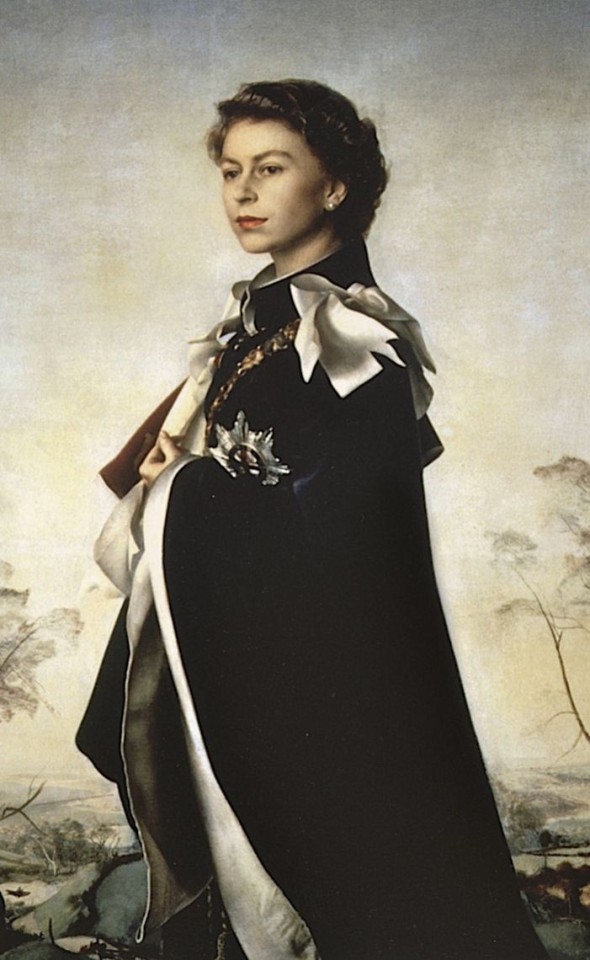
Queen Elizabeth the Second, by the Grace of God Queen of this Realm and of Her other Realms and Territories, Head of the Commonwealth, Defender of the Faith.
April 21st 1926 -September 8th 2022
The Queen is dead, long live the King
#queen elizabeth ii#elizabeth II#defender of the faith#supreme head of the church of england#the most noble and ancient order of the garter#70 years#royalist and proud#long live the king#king charles III#👑👑
27 notes
·
View notes
Text
i wanna see a version of all you wanna do where howard sees henry sort of like a celebrity. she’s initially excited to be at court and is flattered that someone so famous and powerful is giving her attention, but the fun immediately leaves the situation once she realizes that his interest in her isn’t purely platonic.
#redlady speaks#six the musical#'tall large henry viii supreme head of the church of england... *squee* hi!!!'#it's sort of a 'celebrity picks out a young fan and sexually grooms them' situation#and howard's trapped once she realizes what he's really after due to the power he holds over her (both socially and emotionally)
19 notes
·
View notes
Text
Ladies if he's.
Tall
Large
Supreme head of the Church of England
Globally reverierd although you wouldn't know it by the look of that beard.
He is not your man he is King Henry the eighth of England and you should run away
180 notes
·
View notes
Text
On 17 October 1980, the Queen and Prince Philip were received in private audience by Pope John Paul II at the Vatican.
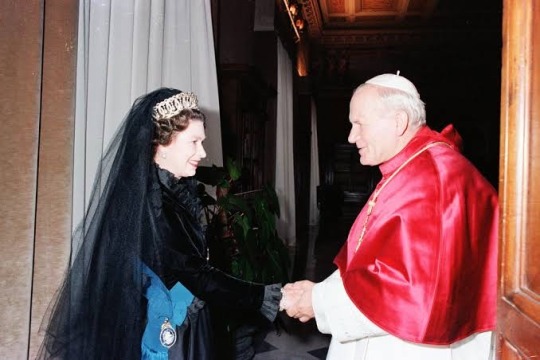

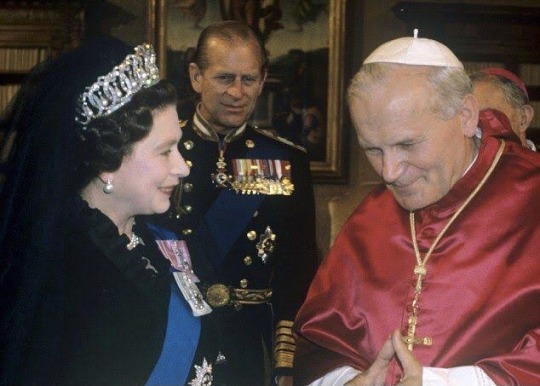
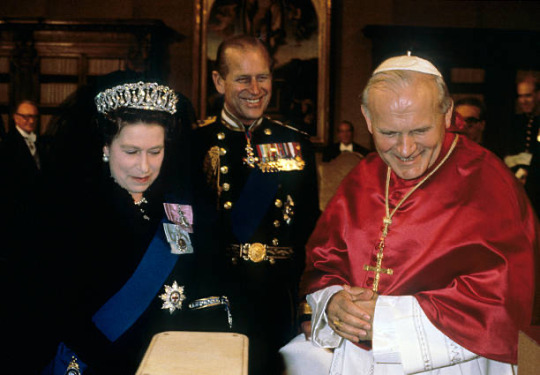


“The two religious leaders - the Pope as Head of the Roman Catholic Church on earth and The Queen as Supreme Governor of the Church of England - found they had much in common, including a mutual interest in ancient sacred documents, and the Pope was delighted to discover that The Queen was not merely being polite but showed an expertise he had not expected.”
Life with the Queen by Brian Hoey
122 notes
·
View notes
Photo

Saint Thomas More
1478-1535
Feast day: June 22 (New), July 9 (Trad)
Patronage: adopted children, civil servants, court clerks, difficult marriages, large families, politicians, lawyers, and statesmen
St. Thomas More was an English lawyer, social philosopher, author, statesman and noted Renaissance humanist. He was also a counselor to Henry VIII and Lord Chancellor from October 1529 to 16 May 1532. More opposed the Protestant Reformation, in particular, the theology of Martin Luther and William Tyndale. He also wrote Utopia, published in 1516, about the political system of an ideal and imaginary island nation. More opposed the King's separation from the Catholic Church, refusing to accept him as Supreme Head of the Church of England, and what he saw as Henry's bigamous marriage to Anne Boleyn. Tried for treason, More was convicted and beheaded.
Prints, plaques & holy cards available for purchase here: (website)
114 notes
·
View notes
Text





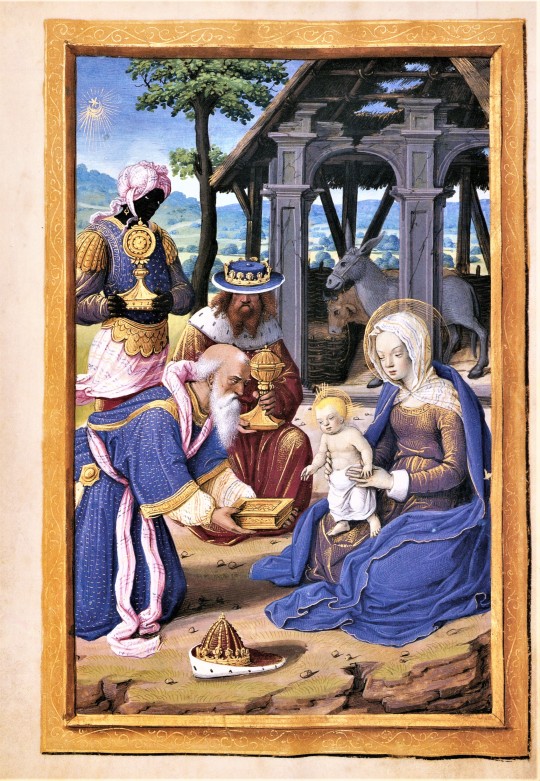
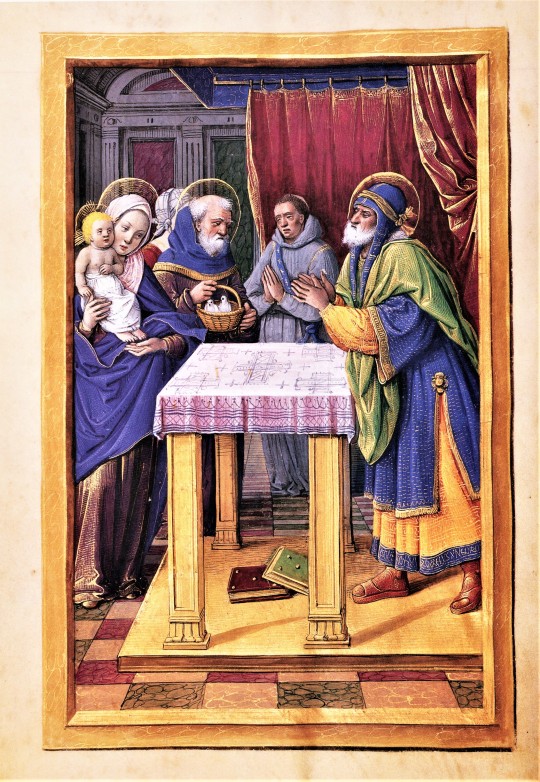
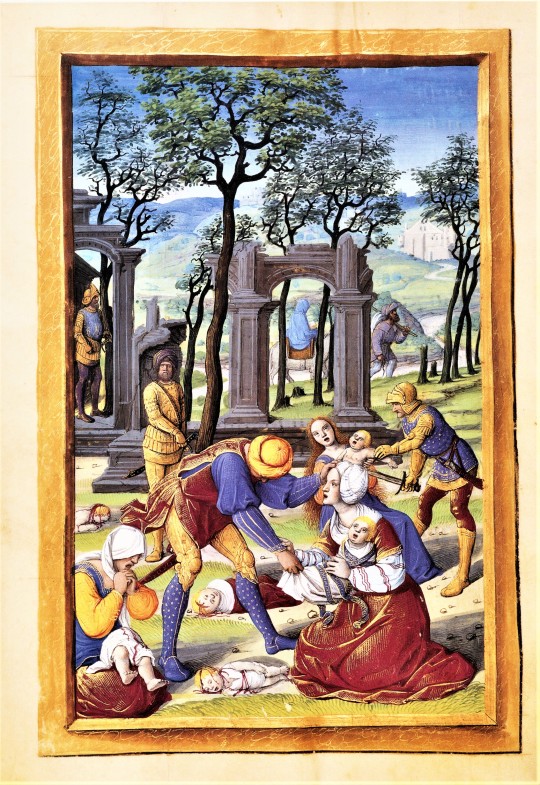
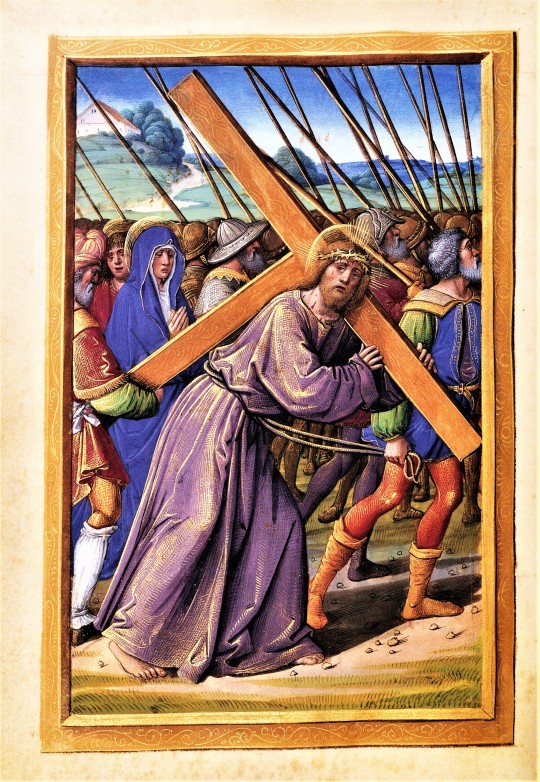

Milestone Monday
On this date, August 31 in 1535, King Henry VIII of England was excommunicated from the church by Pope Paul III. This was the culmination of a long series of conflicts and actions stemming from the king's desire to have his marriage to his first wife Catherine of Aragon annulled, which the previous Pope Clement VII opposed. This eventually led to a schism with the church in Rome and several excommunication proclamations by both Clement and Paul. Henry's confirmation as the Supreme Head of the Church of England in 1534, and then his execution of Bishop John Fisher in June of 1535, followed in July by the execution of Sir Thomas More, precipitated Paul III's excommunication order of August 31. On 17 December 1538 Pope Paul III issued a further bull renewing the execution of the August 31 bull, which had been suspended in a cautious hope Henry would repeal his behavior.
Henry was not always on the outs with Rome, and was in fact once considered a contemporary pillar of the church. In the early part of his reign, Henry was a devout and well-informed Catholic to the extent that his 1521 publication Assertio Septem Sacramentorum ("Defence of the Seven Sacraments") earned him the title of Fidei Defensor (Defender of the Faith) from Pope Leo X. One testament to his early piety might be seen in his probable ownership of this Book of Hours, known as The Hours of Henry VIII executed by the French miniature painter and manuscript illuminator Jean Poyet sometime between 1500 and 1503, and currently held by the Morgan Library in New York City. The images shown here are from "the Library's first monograph devoted to the oeuvre of a single illuminator," published by George Brazillier in 2000. Click on the Alt description of each image to view the titles.
View more Milestone Monday posts.
#Milestone Monday#milestones#Henry VIII#excommunication#Pope Paul III#The Hours of Henry VIII#Jean Poyet#Book of Hours#devotional art#illuminated manuscripts#Morgan Library#George Brazillier
33 notes
·
View notes
Note
Considering how sexist the medieval times were for women and how there are men in our world today who still can’t stomach a woman in the top boss ceo. How did they cope with queens? Like Elizabeth 1st? I know Mary 1st of Scotland had a horrific time. But Cathrine the great (a but later) and quite a few Scandinavian ruling queens. But In Tudor times was it just because Elizabeth was the only Tudor left? That made men less domineering and more obedient? Because I heard Mary 1st of England still had a difficult time too, more so than Elizabeth
Well, first of all, it's important not to conflate medieval with early modern. Periodization is a modern construct, but we are looking at roughly a thousand years of recorded time, so it's worth remembering that how people viewed a woman exercising power in 1200 would not necessarily equate to how people viewed a woman exercising power in 1600. Also important to remember is that you can't apply the example of one country to others. Just because the English had a problem with women ruling in their own right doesn't mean other countries in Europe (France, Scandinavia, Russia, etc) were as rigid about it.
All that being said, in the broadest sense, the way that Elizabeth I managed to hold on to power as long as she did was, unfortunately for those who want to view her as a feminist icon, by presenting herself as unique amongst women. That she was both the Queen of England and the Supreme Head of the Church of England made this an easier sell, at least to her Protestant subjects. It also, of course, made her a favourite target for Catholics.
That there were other contemporary women also ruling in their own right (Mary Stuart) or on behalf of male relatives (Catherine de' Medici) may have been something Elizabeth viewed as a threat, rather than a sign of progress. It's hard to say. But if you look at a lot of the rhetoric she uses in her speeches and her letters, she very much leans on the idea of herself as an avatar of England, a woman above all others. The persona of the Virgin Queen, in essence.
I also firmly believe that Elizabeth could not have succeeded as she did if she had not followed Mary I. A lot of her rhetoric is actually based on similar passages from speeches and letters written by or on Mary's behalf. Mary was exceptionally well-educated too, and people often forget that because she's so overshadowed by her half-sister. Mary had the triple misfortune of being Catholic, being chronically ill, and being married to Philip II of Spain. Any one of those individually, she might have been able to work through, but all three proved to be too much.
Catherine de' Medici, on the opposite side of the channel, exercised power in a different way, and part of the reason for that was because France (and, to a far lesser extent, the Italian city-states) both had established precedents for women ruling as regents. The problem that Mary Stuart ran into (well, one of them) was that she was raised in France and took many of those precedents for granted when she attempted to rule in Scotland.
If we want to talk about earlier queens, the fact is that we do have evidence of queens exercising power, it's just not in any sort of systematic way.
#medieval history#Europe#England#France#early modern#16th century#mary i of england#elizabeth i#catherine de' medici#mary stuart
45 notes
·
View notes
Text
Elizabeth Mary of House Windsor
HER LIFE
Elizabeth II, Queen of the United Kingdom, Antigua and Barbuda, Australia, The Bahamas, Belize, Canada, Grenada, Jamaica, New Zealand, Papua New Guinea, Saint Kitts and Nevis, Saint Lucia, Saint Vincent and the Grenadines, Solomon Islands, and Tuvalu (all totalling about 151 million people) was perhaps the most known women in the world.
Elizabeth (1926-2022) was the first child of King George VI and Queen Elizabeth. She and her sister, Margaret, were raised in the castle and privately educated, and were kept out of public eye for much of their childhood.
During World War II she began undertaking public duties, starting with making radio addresses and public appearances. She was appointed colonel of the Grenadier Guards in 1943 and honorary second subaltern of the Auxiliary Territorial Service in 1945. She was trained to work on car engines, though I cannot find any evidence that she performed any services beneficial to the war effort.
Elizabeth married Prince Philip of Greece and Denmark (self-styled Philip Mountbatten to emphasize his British heritage, he would renounce his Greek and Danish titles and convert to Anglicanism) in 1947, when she was 21 and he was 26, though they had met thirteen years previously. Philip was her second cousin once removed.
As her father's health declined in 1951, Elizabeth increasingly took center stage at public events. In 1952, following her father's death, she was proclaimed queen. From the end of WWII and around 1960, the globe saw the widespread decolonization from imperial powers such as Great Britain, most of which Elizabeth oversaw. Throughout her extensive rule, public favor on the Royal Family, and monarchy in general, decreased. Her family had a number of scandals, mostly with regards to love and marriages. Increased knowledge of the financial impacts of the Royal Family also caused increased Republican attitude, and a storm of sudden emergencies such as the climate crisis, the COVID-19 pandemic, and Brexit increased public distrust of governmental authority.
Reigning for over 70 years, Elizabeth II was the longest reigning British monarch in history and the second-longest reign of any monarch in history (following Louis XIV of France and Navarre, who reigned just over 72 years in the 17th and 18th centuries). She reigned alongside 15 prime ministers.
THE ROLE OF THE CROWN
The United Kingdom monarchy is a constitutional monarchy now headed by Charles III, her son. Their role in government is severely limited, and their duties are largely ceremonial, representational, and diplomatic. The elected Parliament is the functional head of UK government.
In reality, British royalty and nobility have an undue influence of domestic and international politics. The bicameral Parliament has two houses, the House Lords containing members of the Church of England and hereditary peers (dukes, marquesses, earls, viscounts, barons. There are 808 hereditary peers in the United Kingdom).
The monarch, such as Elizabeth II or Charles III, has the role of Crown-in-Parliament (Queen-in-Parliament or King-in-Parliament) which acts with the advice and consent of the Parliament. The monarch does have the power to veto or refuse to sign laws passed by Parliament (withholding royal assent), remove the elected Prime Minister from power, or dissolve Parliament entirely.
In the judicial government, the monarch appoints the Justices of the Supreme Court of the United Kingdom, as well as the power to change the number of judges. The monarch also appoints most high offices of the state, is commander-in-chief of all military branches, ratifies treaties, and declares war.
Religiously, the monarch is the Head of the Church of England and appoints all bishops and archbishops,
The monarch also has significant political power in Commonwealth Nations. In Canada, for example, the appointed Governor General (currently Mary Simon, Inuit) has the power to veto any bill, call and dissolve Parliament, can offer judicial immunity and pardon, and can refuse the appointment of the Canadian Prime Minister. Much of foreign affairs, everything from wars, alliances, ambassadors, and even issuing passports, are powers of the Crown.
Much of political stability of the United Kingdom and the 14 Commonwealth Nations rests under the assumption that the monarch will never actually use any of the powers they have. Doing so would cause a Constitutional crisis and likely end with the immediate arrest of said monarch (most consider it a fair assumption the guard would side with Parliament over the Crown despite the Crown being in the legal right).
FACTS ABOUT THE ROYAL FAMILY
The Royal Family now includes 9 people (immediate family of King Charles III who carry out royal duties full time). The heir apparent to the throne in Prince William, Duke of Cornwall and Cambridge (b. 1982).
The monarch is not required to pay income tax, capital gains tax, or inheritance tax.
Either the Crown itself of members of the Royal Family own 24 royal residences.
In 2021, the Royal Family cost the British taxpayers 102.4million pounds.
The Royal Wedding of 2018 between Prince Harry and Meghan Markle cost about 34million pounds, of which 94% was paid from taxes.
In addition to using government money for personal use, the Royal Family has several streams of income, including the 86-million pound Sovereign Grant, millions of pounds from the Duchies of Cornwall and Lancaster, and other assets
The Crown holds hundreds of thousands of works of art, much of which is in private residencies or not on display.
The monarch is the only person in all of Scotland not required to use renewable energy in the construction of pipelines to heat buildings, after intense lobbying from the Crown's lawyers.
152 notes
·
View notes
Text
Since I am totally very normal about Six… I have decided to overanalyse all the lyrics: Don’t Lose Ur Head
Grew up in the French Court
Initially I thought this meant Boleyn was French, but a simple google search actually reveals she was born in England, but did part of her education in France as a maid of honour (lady in waiting) to the French queen.
Oui, oui, bonjour
“Yes, yes, hello” in French to indicate her upbringing.
Life was a chore so (she set sail)
1522 came straight to the UK
Boleyn returned to England that year to marry a distant cousin. This was planned simply in the interest of her family for some land.
All the British dudes, lame
Epic fail
This engagement was broken off at some point, though there is nothing to suggest a specific reason. This has left Boleyn a single woman in England.
Ooh, I wanna dance and sing
This could be a reference to her character in the musical as she had become a singer here, however, this could also reference the fact Boleyn was known for singing and dancing rather well.
Politics, not my thing
Ooh, but then I met the King
Boleyn became a maid of honour to Catherine of Aragon, which led to her meeting Henry. In 1526, he became interested in her and attempted to seduce her.
And soon my daddy said, "You should try and get ahead"
Might be about trying to get ahead of her sister Mary Boleyn, who was Henry’s past mistress but nothing more. Additionally, this line sounds like “get a head”, hinting at her eventual loss of a head.
He wanted me, huh, obviously
Messaging me like everyday
This is of course as in sending letters, but could be a parody of the trope of the cheating husband messaging his lover on his phone every day and having to be secretive about it to his wife.
Couldn't be better, then he sent me a letter and who am I kidding
I was prêt-à-manger
I do not speak any French so had to use google translate; “ready to eat”. I was confused at first why this line would be used, but I figured it may be one of these possibilities: could be literally referring to royal food as Henry was very wealthy and ate better than anyone else at the time; ready to eat up all of the love she is given; or it could be a sexual innuendo.
Ooh, sent a reply
Ooh, just saying hi
Ooh, you're a nice guy
Surface level, seems like Boleyn is saying she believed Henry was a decent man. However, overanalysis kicks in! This possibly could be a reference to the modern use of the term “nice guy”; a man who acts nice to a woman but believes he is entitled to something, so if something does not go his way, he flips.
I'll think about it maybe, xo baby
Here we go
(You sent him kisses)
I didn't know I would move in with his misses
Boleyn, Aragon and Henry were living in the same palace due to Boleyn’s position in court, but later she was moved to her own lodging to be closer to Henry.
(What?)
Get a life
You're living with his wife?
Like, what was I meant to do?
Once Henry made up his mind, the woman in his life had little control over the next events. This is later proven in ‘I Don’t Need Your Love’. Boleyn did not have many options in her situation.
Sorry, not sorry 'bout what I said
Boleyn was known to have some rather controversial things (at the time) when angered, one of the most notable examples being “Ainsi sera groigne qui groigne”, which means “Let them grumble; that is how it is going to be”, this being her motto. This line could possibly also be about the things she said to Henry which led to him annulling his marriage with Catherine of Aragon, and becoming supreme head of the Church of England.
I'm just tryna have some fun
Don't worry, don't worry, don't lose your head
To ‘lose your head’ means to lose self-control or panic, but it also obviously refers to the fact that Boleyn was beheaded, so she literally was the one to lose her head.
I didn't mean to hurt anyone
LOL, say oh well
The use of modern language that has been popularised with social media contrasts with the time period these events took place. Additionally, this language is rather casual, so it shows the character’s attitude to the whole situation.
Or go to hell
This is another major contrast - the line before this was rather innocent-sounding, and suggests she had no ill-intent, yet this line is the complete opposite as the Tudor times were very religious so this would’ve been taken rather seriously.
I'm sorry, not sorry 'bout what I said
Don't lose your head
Three in the bed and the little one said
This is a reference to the famous (at least in England) nursery song ‘Ten In The Bed’. In this bit the character of Boleyn points to herself in reference to “the little one”, which could also be highlighting how Anne Boleyn was around 10 years younger than Henry, and more than that than Aragon.
If you wanna be wed, make up your mind
Her or me, chum
The letters Henry sent to Boleyn indicate she refused to sleep with him for most of their relationship before marriage, likely because it was looked down upon if a woman wasn’t a virgin before marriage. This likely was a factor in why Henry decided he wanted Boleyn to be more than just another one of his mistresses.
Don't wanna be some
Girl in a threesome
Are you blind?
Ooh, don't be bitter
Ooh, 'cause I'm fitter
This shows a sort of conflict between Aragon and Boleyn, which may represent how civilians of England would show support to different queens (mainly Aragon) as a new queen was a rather large change at the time.
Ooh, why hasn't it hit her?
He doesn't want to bang you
Somebody hang you
This might refer to a quote by Anne Boleyn, where she said would “rather see her hanged than acknowledge her as her mistress”.
Here we go
Your comment went viral
This is relevant to social media today how certain things can ‘go viral’, and can lead to cancel culture, like how Boleyn became hated by most of England, mostly because Aragon was a beloved queen.
I didn't really mean it but rumours spiral
Wow Anne, way to make the country hate you
As I stated before, Boleyn was hated and unpopular with a lot of the English population, and that led to some riots against her.
Mate, what was I meant to do?
Sorry, not sorry 'bout what I said
I'm just tryna have some fun
Don't worry, don't worry, don't lose your head
I didn't mean to hurt anyone
LOL, say oh well
Or go to hell
I'm sorry, not sorry 'bout what I said
Don't lose your head
Tried to elope
But the pope said nope
At first Henry actually asked the pope to annul his marriage with Aragon in order to marry Boleyn, but this was obviously refused. Henry had the court meet to discuss this matter, but nothing really went from there. The two of them ended up getting married in secret.
Our only hope was Henry
He got a promotion
Henry pushed the Act of Supremacy, which made him the supreme head of the Church of England. This meant the pope held no religious authority over England, and he did divorce Aragon as he had wanted for a long time, not only because of Boleyn, but also because he wanted a son.
Caused a commotion
Set in motion the C of E
The C of E is just a shortened phrase that refers to the Church of England, whom Henry was the head of.
The rules were so outdated
This likely refers to how many times Henry’s annulment to Aragon was denied, which didn’t allow for Boleyn and Henry to marry.
Us two wanted to get x-rated
In order to sleep with one another, couples were expected to marry first, so this line is a reference to that.
Soon, ex-communicated
Everybody chill, its totes God's will
Boleyn was a Catholic and was rather religious, but not as religious as some of the other queens.
Henry's out every night on the town
Just sleeping around, like what the hell?
Henry was known to have lots of mistresses during his marriages, and his marriage to Boleyn was no exception. She already knew he used to sleep with her sister while he was married to Aragon and had a son with another woman. Historical sources claim that he had started courting Jane Seymour during this marriage.
If that's how it's gonna be
Maybe I'll flirt with a guy or three
Boleyn was known to be rather flirtatious and was later charged with adultery. One of the men believed to have been a lover of hers was Mark Smeaton, who confessed to this accusation, however, this was likely after being tortured or promised freedom, so it is difficult to say if this was an accurate accusation. There were a few other men who Henry claimed Boleyn had romantic affairs with, but there is not that much evidence for those, which is why historians often theorise Henry made up these charges in order to get rid of his wife in order to marry Seymour.
Just to make him jell
Henry finds out and he goes mental
He screams and shouts
Like so judgemental
You damned witch
Boleyn wasn’t actually charged with witchcraft, but a lot of people over the years spread the rumour of her being a witch, claiming she had a sixth finger - and deformities like this were associated with witchcraft in the past. There is no real evidence to suggest she did have this.
Mate, just shut up
Women weren’t expected to stand up to their husbands, so Boleyn telling Henry to “shut up” would have been very much looked down upon.
I wouldn't be such a b-
Throughout the entire musical, curse words are censored mostly by the other queens interrupting.
If you could get it up
Here we go
(Is that what you said?)
And now he's going 'round like off with her head
(No)
Yeah, I'm pretty sure he means it
(Seems it)
Of course, this is referring to how Henry decided to have Boleyn executed, specifically by beheading. The phrase “off with their head” became popularised by Lewis Carroll, who published his original books on Alice in Wonderland, which is said by the Queen of Hearts.
What was I meant to do?
(What was she meant to do?)
Like what was I meant to do?
(What was she meant to do?)
No, but what was I meant to do?
Sorry, not sorry 'bout what I said
I'm just tryna have some fun
Don't worry, don't worry, don't lose your head
I didn't mean to hurt anyone
LOL, say oh well
Or go to hell (she's going to hell)
Sorry, not sorry 'bout what I said
Sorry, not sorry 'bout what she said
Sorry, not sorry 'bout what I said
Don't lose your head
Haha sorry
In a fit of anger, Boleyn would say things she regretted, which is reflected by the fact she apologised only at the end.
EXTRA: After this song, the character of Boleyn attempts to perform a solo song titled ‘Wearing Yellow To A Funeral’. This is a reference to how after Catherine of Aragon died, Henry was happy to hear the news, and attended her funeral with his new wife Anne Boleyn. They were both wearing yellow, which was a colour that symbolised mourning in Spain (Aragon’s country of origin), but joy and celebration in England.
21 notes
·
View notes
Photo

One of the most revolutionary events in English history, the Dissolution of the Monasteries (sometimes referred to as the Suppression of the Monasteries), was the set of administrative and legal processes between 1536 and 1541, by which King Henry VIII disbanded monasteries, priories, convents and friaries in England, Wales and Ireland; in effect, sacking and looting them for their income, land and assets.
In order to grasp the impact of the Dissolution, it is necessary to understand that in the late 1530s there were nearly 900 religious houses in England (around 260 for monks, 300 for regular canons, 142 nunneries and 183 friaries). As such, some 12,000 people in total (4,000 monks, 3,000 canons, 3,000 friars and 2,000 nuns), were engaged in carrying out the functions of those religious houses. To put this in context: if the adult male population was 500,000, one adult man in fifty was in religious orders.
Henry was given authority by the Act of Supremacy, passed by Parliament in 1534, which made him Supreme Head of the Church in England, thus separating England from Papal authority; the King's position further strengthened by two Acts of Suppression (1536, and 1539). The policy was originally envisaged as increasing the regular income of the Crown, and much former monastic property was sold off in the 1540s to fund Henry's military campaigns; though by the time Henry VIII turned his mind to the business of monastic reform, royal action to suppress religious houses already had a history of more than 200 years.
The first case was that of the so-called, Alien Priories (some, merely agricultural estates with a single foreign monk in residence; others, rich foundations in their own right, such as Lewes Priory, which not only answered to Cluny of Paris, but sent money overseas, too).
Given the fairly constant state of war between England and France in the Late Middle Ages, the money sent to France by these Alien Houses was a matter of significant grievance in England. As such, the first sequestrations of the assets of the Alien Priories began under King Edward I, continued in the reign of Edward III, and still further continued by act of Parliament in 1414, under the authority of Henry V.
Money and land acquired by the Suppression greatly increased the royal purse, though some of it was also used to found educational foundations: most often setting up new colleges at both Oxford University and Cambridge University. Further instances, include: John Alcock (Bishop of Ely), acquiring the Benedictine nunnery of Saint Radegund to found Jesus College, Cambridge (1496), and William Waynflete (Bishop of Winchester), acquiring Selborne Priory in 1484 for Magdalen College, Oxford.
Dissolution of Monasteries was not an act exclusive to England. In 1521, Martin Luther published 'De votis monasticis' (On the monastic vows), a treatise declaring monastic life was not compatible with the true spirit of Christianity. In Sweden in 1527, King Gustavus Vasa secured an edict allowing him to confiscate any monastic lands he deemed necessary to increase royal revenues; and in Denmark in 1528, King Frederick I grabbed 15 of the houses of the wealthiest monasteries and convents.
King Henry VIII's chief political and legal architect in the Dissolutions was Thomas Cromwell (also instrumental in monastic suppressions instigated by Cardinal Wolsey); though Henry is also said to have been influenced by Desiderius Erasmus and Thomas More; both of whom ridiculed such monastic practices as repetitive formal religion and superstitious pilgrimages for the veneration of relics.
Most parish churches had been endowed with Chantries (each maintaining a priest to say mass for the souls of their donors), and these continued until they too were dissolved under the Chantries Act (of 1547), by Henry VIII's son, Edward VI.
Along with the destruction of the monasteries, the related destruction of the monastic libraries is said to have been on a catastrophic scale: Worcester Priory, for example (now Worcester Cathedral), had 600 books at the time of the dissolution; only six of them are known to have survived intact to the present day.
Similarly, the Abbey of the Augustinian Friars at York, had a library of 646 volumes, of which only three are known to have survived.
48 notes
·
View notes
Text
Ladies if your man is:
Tall
Large
Globally revered
Thats not your man thats
Henry the Eighth Supreme head of the Church of England
188 notes
·
View notes
Note
3 & 18!
Oooooh thank you friend!
3. What is that one scene that you’ve always wanted to write but can’t be arsed to write all of the set-up and context it would need? (consider this permission to write it and/or share it anyway)
I kind of have the opposite, which is a GREAT introduction that I honestly can't be bothered with the follow-through on. Honestly I just wanted to write the joke my spouse made while we were watching the film into a fic lol. So have that! Maybe I'll write it one day, maybe I won't.
“Do you think I could make you come without touching you?”
The question is not, in itself, shocking. Henry likes talking about sex; it’s something Alex has grown used to, learned to appreciate over time. He certainly can’t argue with the results of Henry’s desire to over-analyse each stray thought and fantasy either of them has, fucking workshopping them into the most incendiary thing the two of them have done together until the inevitable next thing comes along.
No, the surprising part of the question is that he asks it now, when they’re sitting side by side on the couch, Henry’s nose buried in Sense & Sensibility while Alex battles his way through the last of his class reading for the night. Henry isn’t even looking at him.
“I…” Alex hesitates, really thinking about it. Because it’s the fundamental truth of the universe: Alex’s body is singularly attuned to Henry, has been ever since Henry pressed him back into his mattress in the White House and gave him the supreme head of the Church of England and rewrote Alex’s understanding of himself. Sure, if Henry told him to come right now, with no work up and no warning, he probably couldn’t, though he’s pretty sure his dick would give it a valiant effort anyway. But laid out on their bed, maybe tied up, with Henry pouring a litany of filth and praise into his ears? “Yeah, probably.”
“Hmm. All right,” Henry says, and then he just—
Turns the page.
18. Do any of your stories have alternative versions? (plotlines that you abandoned, AUs of your own work, different characterisations?) Tell us about them.
Okay I know you haven't read the Much Ado actor AU yet, so I won't go into that one! But one day I totally will lol.
But! Wander Where They Will (swans fic my beloved) originally had the fake/arranged marriage between David and Stevie! Which would have been such a fun subversion of the usual trope, but then I ran up against a deadline and wrote 12k of it in one day and had to streamline the fuck out of the love story lmao. So it wound up where it wound up, but I still wanna see more fake dating/marriage between people who AREN'T endgame. Fucking with tropes is something I deeply enjoy.
[Fun meta asks for writers]
11 notes
·
View notes
Text
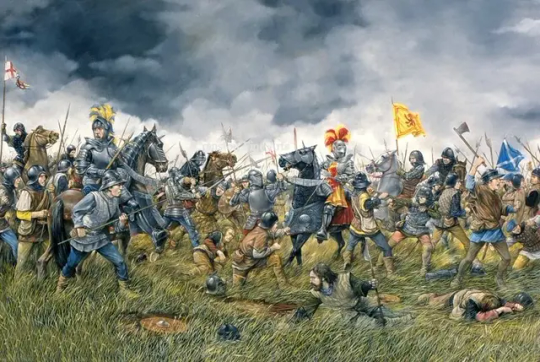
The Battle of Hadden Rig was a battle fought on August 24th 1542, except maybe it wasn't.
To explain this I have to tell you about how much of the dates in history from centuries past can be identified, in this instance it is down to the the feast day of Saint Bartholomew the Apostle, rather than post a date the chroniclers would merely say it was a certain saints day or so many days either side to whatever christian feast, The Battle of Hadden Rig was on St. Bartholomew's day, so the dates all correspond to them aye? Naw, because the calendars changed in 1752, St. Bartholomew's day was originally on September 11th on the old style Julian calendar, nowadays the Catholic Church honours him on August 24th, oh and to muddy the waters a wee bit more Eastern Christianity observe June 11th to honour him. We also have the fact that the actual date September 11th in the Gregorian calendar actually corresponds to August 29th!!! So with that in mind I'll get on with telling you about Hadden Rig.
I think this little known battle is largely forgotten about is due to the numbers involved and the exact location being relatively unknown, I will post a link to this afterwards.
With Scotland now ruled by the young James V under the influence of his English mother, hopes for improved Anglo-Scottish relations were high. However, in 1534 Henry VIII broke the link between Rome and the English church appointing himself as its Supreme Head. Suppression of the Abbeys and plundering of the wealth of the church followed.
Such action was strongly opposed by James V who was heavily influenced by the staunchly Catholic and pro-French magnate Cardinal David Beaton. With Scotland resisting the English move towards religious reform, tensions between the two nations increased significantly. The death of Queen Margaret in 1541 removed the final impediment to war.
Henry VIII demanded that James meet him in York to discuss a religious settlement between the two nations but the Scottish King failed to attend. An English army then raided the Scottish borders under the Command of Robert Bowes.
The only real source for what happened is from the book "The History of the Wars in Scotland: From the Battle of the Grampian Hills In The Year 85, To The Battle Of Culloden In The Year 1746, which was first published in 1783, so a guid few years after the battle. This is directly from that book.
Henry of England, being disgusted at his nephew's connections with France, and finding that Henry of England, Francis had sufficient employment at home, resolved to invade Scotland, both by sea and land.
He, ' appointed a very considerable army to rendezvous upon the borders, under the command of Sir Robert Bowes, one of his wardens, the Earl of Angus, and his brothers. James had nominated the Earl of Huntly to command his army on the borders, consisting of 10,000 men; and his lieutenant was Sir Walter Lindsay of Torphichen, who had seen a great deal of foreign service, and was esteemed an' excellent-officer.
Huntly acquitted himself admirably Well in his commission, and was so well served by his spies, as to have certain intelligence that the English intended to surprise and burn Jedburgh and Kelso.
The English army, under Bowes and the Doug lases, continued still on the borders; and the Scottish nobility and gentry had resolved ’not to attack them on their own ground, nor to act offensively, unless their enemies invaded Scotland. Huntly being informed that the English had ad advanced, on the 24th of August, to a place called Haddonrig, and that they had destroyed a great part of“ the Scottish and debatable lands, resolved to engage them; and the English Were astonished when they saw the Scottish drawn up in order of battle about day-break. Neither party could now retreat without fighting; and Torphichen, who led the van. consisting of 2000 of the best troops of Scotland, charged the enemy so furiously, that Huntly gained a complete and easy victory.
Above 2,000 of the English were killed, and 600 taken prisoner among whom Were their General Bowes, Sir William Mowbray, and about sixty of the most distinguished northern barons; the Earl of Angus escaped by the swiftness of his horse. The loss of the Scottish was so inconsiderable that it is not mentioned.
Of course Henry VIII was not to let this go and got his revenge in November at Solway Moss, more on that in Novembers post.
The following link lets you know where we are in the understanding of the battle as of a couple of years ago, it calls into question the above account, although now mentioning it, it also asks questions about the location, and disputes the numbers.
https://www.thesouthernreporter.co.uk/.../mystery-over...
15 notes
·
View notes
Note
The argument that Charles is turning his back on the doctrine of the Church of England does not stand up to the very history on which the Church of England was founded.
The Church of England was formed in 1534 by King Henry VIII. He did not establish the Church of England because he had divine inspiration or wisdom. He broke away from the Catholic Church for 2 reasons 1) he wanted a divorce from Catherine of Arogon so he could marry Anne Boleyn. 2) He did not want to share power over England with the Catholic Church.
King Henry was given the title "Defender of the Church" by the Pope in 1517. The Pope bestowed the title "Defender of the Faith" because King Henry personally spoke out against the arguments of the Protestant Reformation leader, Martin Luther. Although, Henry rejected the Pope's authority he still followed the Catholic doctrine and burned Protestant heretics. It was yet another King, Edward I that moved the Church of England to become a more Protestant sect, followed by Catholic, Queen Mary who burned over 300 Protestants to force her subjects into the Catholic faith.
Henry, Edward and Mary were within their power as Head of the Church of England to change the church doctrine - and burning peope alive was within their power as monarch. Charles isn't burning people alive, or even forcing the Church of England to change it's doctrine. Charles is simply portraying the message that he respects all faiths.
Acceptance of all faiths is a wonderful Christian attitude to have. We do not live in the 15th century anymore and thank God for that !
In the 15th century, punishment was harsh - burned at the stake, beheaded and being drawn and quarted. The class system was unfair and cruel and women and children were considered property. In the 15th century monarchs were considered supreme beings - today we know they are simply human like the rest of us but born into a priviledged position.
Would the U.K. and the Commonwealth citizens truly want a King that has no room in his heart to be accepting of other religions ? Would they want him to enforce only a Christian religion on his citizens and would they want him to shun the citizens that believe in a different religion ? A person should not feel that their individual faith is threatened by the Head of the Church of England recognizing that some of his subjects believe in their religion just as strongly as members of the Church of England feel about their faith.
Thank you for such an informative post! I think the main issue here is KC is the HEAD of the C of E. Every religion has their own HEAD of their religion. I don’t see other religions in celebration of the head of the C of E coronation having special services to embrace the Anglican religion. (In Canada we say Anglican). I think everyone should be respectful of all faiths, that doesn’t mean I want to hear their sermons in a Catholic Church. This is just my opinion.🐼
24 notes
·
View notes
Text

tall long henry the 8th... supreme head of the church of england
14 notes
·
View notes
Text
In particular, the emphasis on faction risks understating how serious Henry VIII was about his religion. It was more than just a question of which side to pick in the international league of confessionally inflected rivalries. It has often been hard for commentators to grasp that this most self-serving and intermittently tyrannical of rulers nevertheless had a religious faith that was deeply held, if idiosyncratic. His detailed scrutiny of religious formulations and energetic participation in religious debate indicate how solemenly he undertook his role as supreme head of the Church in England. This was the lens through which he saw much of the world around him, including his relationships with women.
Whip with Six Strings, Lucy Wooding
#lucy wooding#i mainly agree with this but i wish it was reckoned with both ways?#i think the french cold feet on the matter of betrothal to elizabeth is often reduced to the papal verdict of henry's marriage#which did not help but probably had more to do with the affair of the placards coinciding with the timing; francis' marriage to eleanor#and also hviii insisting on terms they refused to agree with bcus agreement would mean alienating the pope#like it would have strengthened her position ultimately but it's possible there would have still been cold feet in the matter had anne#had a son by that point...#hunting the falcon review#henry viii#like just to play with speculation a bit: henry's terms for a betrothal to his son would have been exactly the same#that the french make an overt acknowledgement of his religious supremacy in his own kingdom. smth they were totally unwilling to do#granted he might have found another nation more willing to affiance on those terms . and other nations#would have been more willing to sign betrothals for elizabeth AND a son so there's that.
3 notes
·
View notes